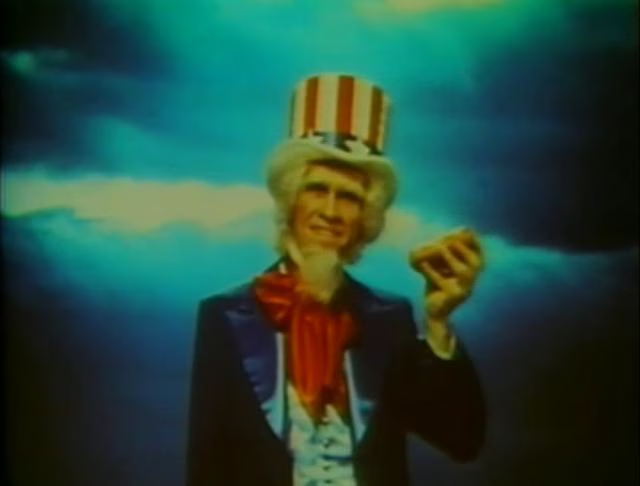
How can product marketing methods be applied to politics?
“Nixon had never really understood the image game, but he learned quickly from Kennedy. Eight years later, he sold himself like soap powder and he won with a margin of only a few per cent.”
Madison Avenue, the centre of the American advertising industry, is the subject of the last of John Pilger’s three 1976 documentaries made in the United States. At a time of recession and nine million unemployed, $26 billion a year is still being spent on advertising.
Pilger compares the selling of a politician with that of a new, wet toilet paper and says that half of the $300 million spent on choosing a new president this year will go to advertising agencies and image-makers. In 1968, he reports, “the new Richard Nixon” was sold, in contrast to his previous image as a person from whom no one would buy a used car, by giving him “that magic ingredient – believability”.
An executive at the Skally McCabe Slowes agency, responsible for the innovative toilet paper Fresh’n – described by Pilger as “the ultimate in the unnecessary” – says there is nothing it will not sell, although no one would be expected to work on a political campaign if they did not believe the politician or the cause were “just and fair”. Five years before Ronald Reagan’s inauguration as President, one of the agency executives cites him as an example.
Meanwhile, with the 1976 presidential election campaign in its final throes, Pilger compares Jimmy Carter’s campaign with that of a fellow Democrat. Image-making had begun with John F Kennedy and the party’s realisation that television advertising could make a few per cent difference in the electoral vote, just enough to get him elected. Richard Nixon learned from this and won by a similar margin eight years later.
Just $1 billion would make all the farmers in the world self-sufficient and independent of charity, says Pilger – the same amount that is being spent on freshened toilet paper and the presidential campaign. “Both products – pre-moisturised toilet tissue and some politicians – have those two magic ingredients: believability and flushability,” he concludes.
The Street of Joy (Pilger, ATV), ITV, 20 September 1976
Producer-director: Richard Marquand; producer: Richard Creasey (26 mins)


